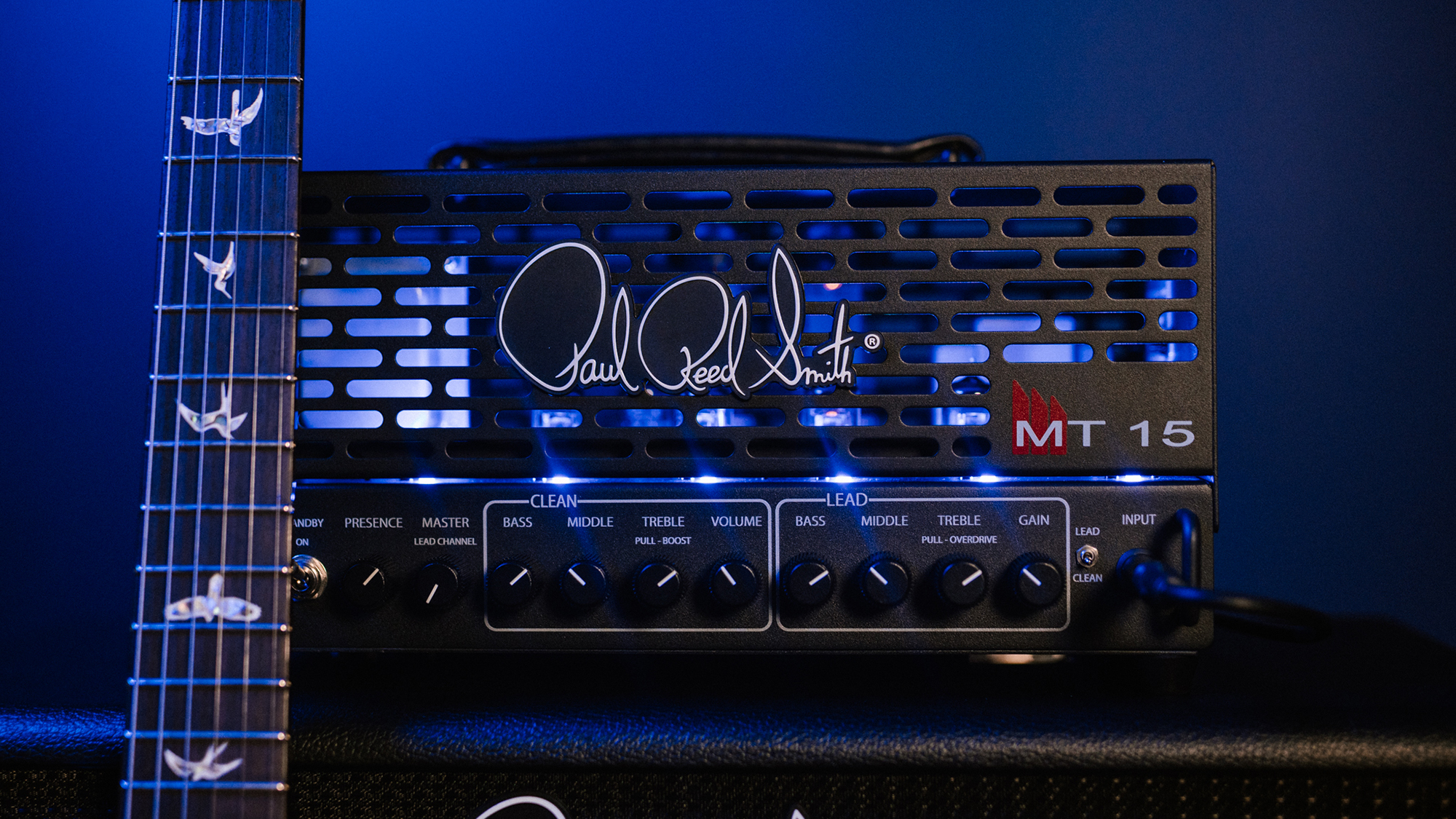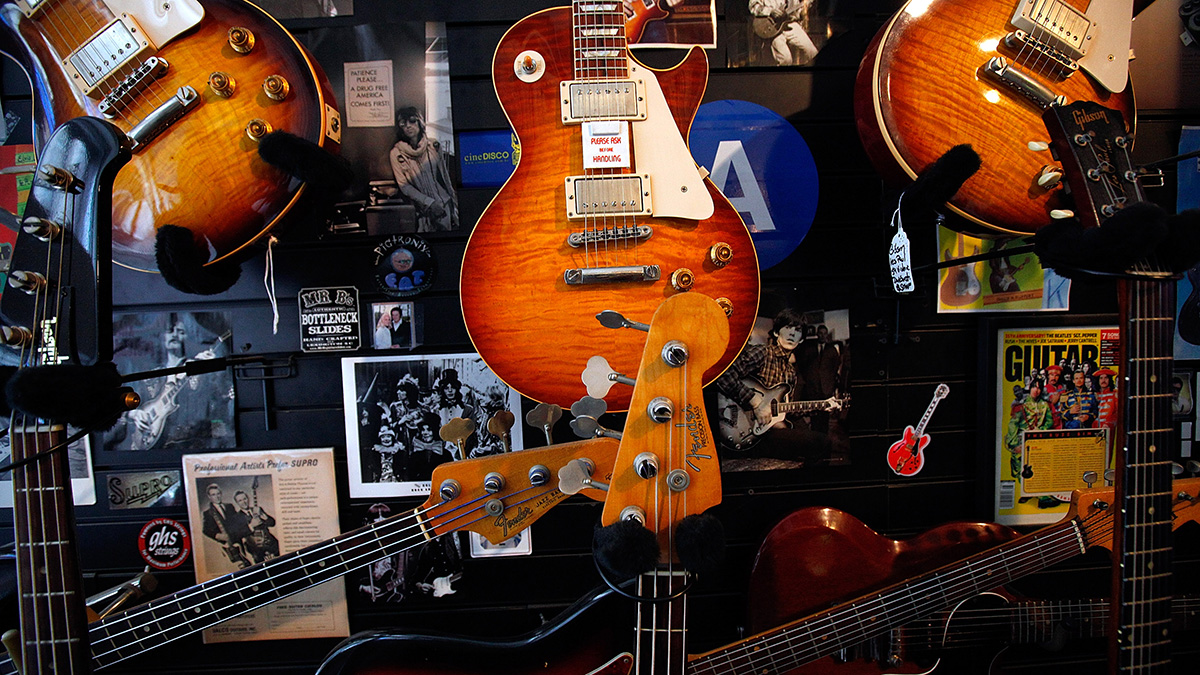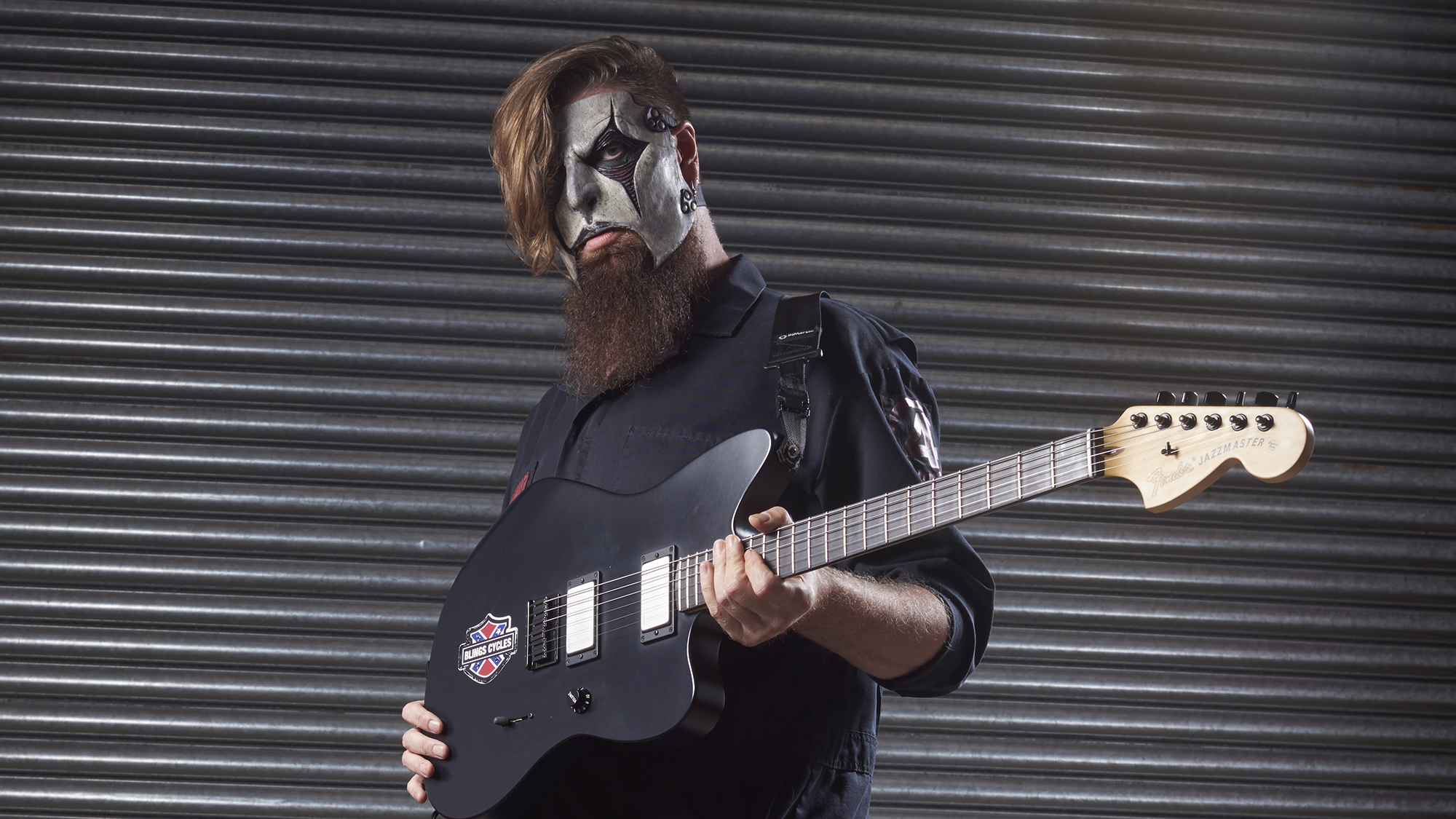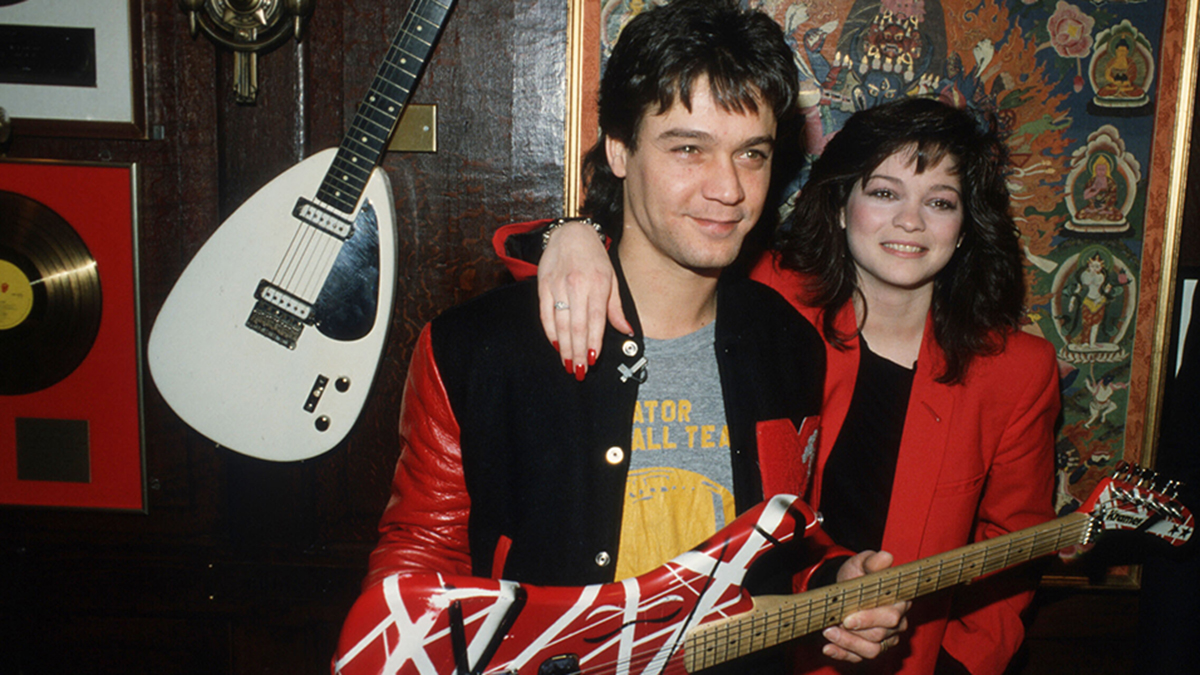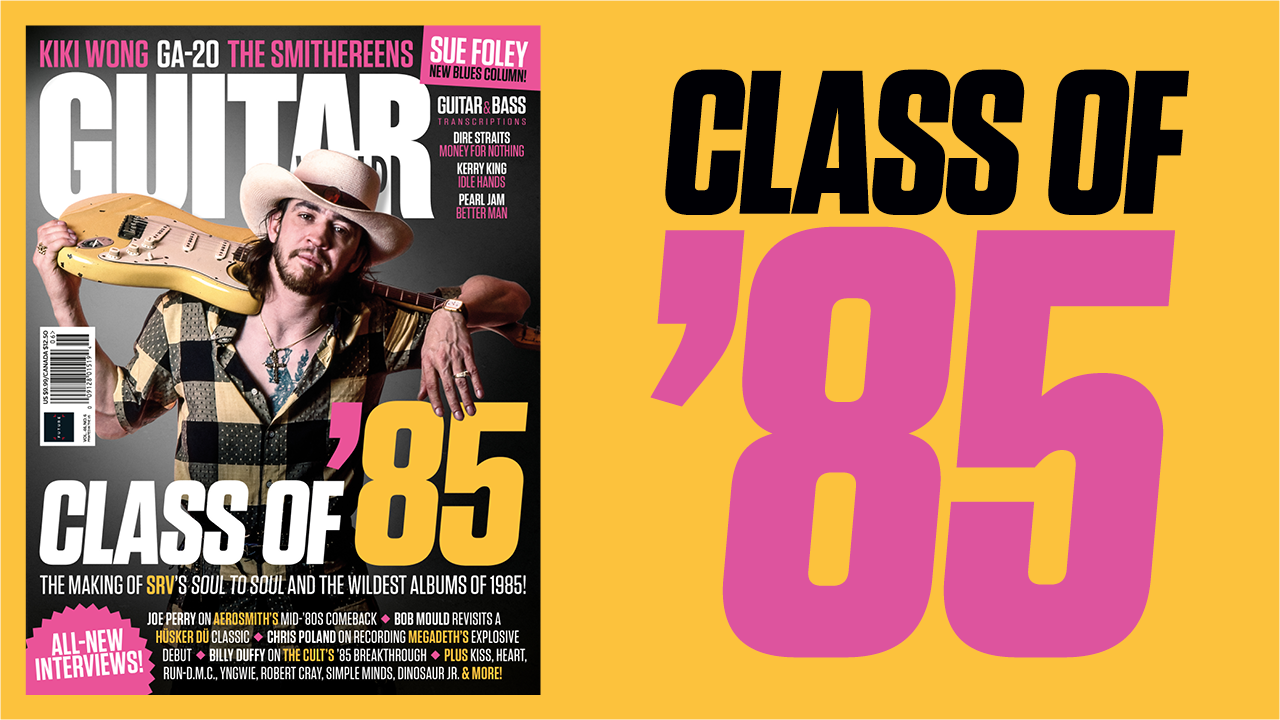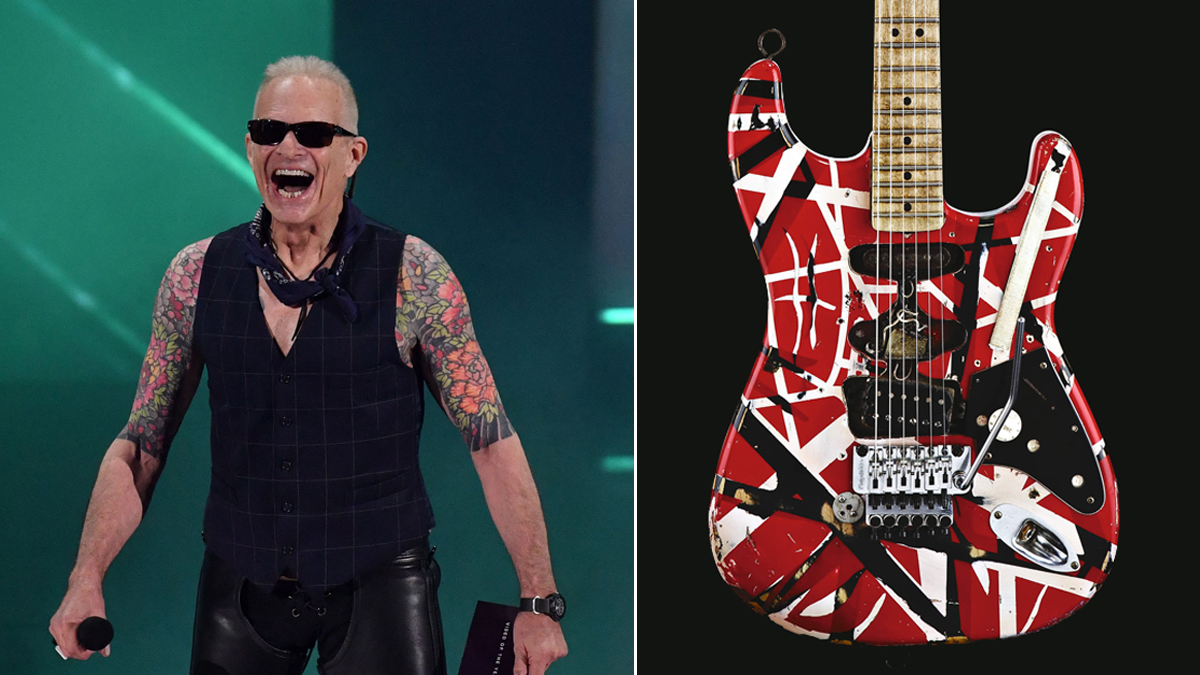
On Saturday (December 4), David Lee Roth posted a seven-minute video in which he recalled in great detail the origin story behind Eddie Van Halen’s Frankenstein electric guitar, claiming he was the brains behind the iconic striped aesthetic.
The video was posted in response to comments that drew comparison between Roth’s Big Wave painting and the Frankenstein, with the former Van Halen vocalist dubbing the guitar’s striped motif “my work”.
However, his story has since been disputed by Chris Gill – Guitar World contributor, EVH guitar expert and co-author of Eruption: Conversations with Eddie Van Halen – who blasted Roth’s recollection as “a complete revisionist fabrication” that contains “three key factual errors”.
In Roth’s video, the singer recalled that Van Halen’s original guitar featured a white finish, and claimed he suggested an “expanding linear pattern” in the mid–’70s in a bid to differentiate it from Jimi Hendrix’s own Fender Stratocaster.
“Because this was like mid-'70s – ‘75, ‘76ish – I said to Ed, ‘An expanding linear pattern,' because the white, plain guitar is eerily reminiscent of Jimi Hendrix, and at that point in time Hendrix was still very nearby having recently departed,” Roth claimed.
The frontman also said that he “walked in with three rolls of tape: one roll of grey duct tape, one roll of black electrician’s tape, and one roll of blue tape that we used for pinstriping”.

In response to Roth’s comments, Gill offered a comprehensive rebuttal, telling Guitar World, “Three key factual errors in Roth’s statement prove that his story is a complete revisionist fabrication.”
Get The Pick Newsletter
All the latest guitar news, interviews, lessons, reviews, deals and more, direct to your inbox!
Referencing “accurately dated photographic evidence”, Gill notes that “Van Halen’s Frankenstein guitar did not appear until February 1977” – not in ‘75 or ‘76 as Roth claimed – and originally had an unfinished, rather than white, body that was later photographed in May of that year with an all-black colorway.
Though Gill confirmed Van Halen had a 1961 Fender Stratocaster that was painted white in January 1977, he went on to say that it “existed for less than a month”.
“The white ‘61 Strat was taken apart very soon afterwards,” he explained, “with its neck, serial number plate, and vibrato tailpiece/bridge showing up in Feb ‘77 on the unfinished Frankenstein body.”
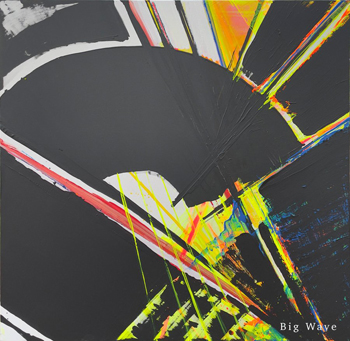
Later in Roth’s video, the vocalist posited the stripes were created by spraying red and black paint on to the white body.
Gill, meanwhile, argued Roth “gets this essential detail completely wrong”, and that the stripes were created by applying masking tape and spraying white paint on to the black-finished Frankenstein body.
And, in response to Roth’s assertion that he used three different types of tape on the white body – specifically the blue variant for pinstriping – Gill noted such tape was not invented until 1988. By this point in time, Roth had been out of Van Halen for three years.
“Because it didn’t even exist yet," Gill said, "there is no way Ed could have used 3M blue tape, neither in the summer of 1977 when he first painted the black and white stripe motif nor in March of 1979 when he added the red coats of paint to the Frankenstein finish.
“In fact, Ed used torn strips of gaffer tape when applying the red coat – a piece of that gaffer tape still remains on the guitar.”
In his video, Roth does admit he hasn't “looked at the guitar in years, and I haven't done research,” noting that the clip “isn't a science lesson… just my memory.”
For more information on how one of the most iconic guitars in rock was actually put together, check out Gill's article on the true origins and evolution of Eddie Van Halen's legendary Frankenstein.

Matt is the GuitarWorld.com News Editor. He has a Masters in the guitar, a degree in history, and has spent the last 16 years playing everything from blues and jazz to indie and pop. When he’s not combining his passion for writing and music during his day job, Matt records for a number of UK-based bands and songwriters as a session musician.
“The Beyoncé effect is, in fact, real. I got a lot of traffic just from people checking the liner notes”: With three Grammy wins and plaudits from John Mayer, Justus West is one of modern session guitar’s MVPs – but it hasn’t been an easy ride
“You might laugh a little. The post office shipped your guitar to Jim Root”: This metal fan ordered a new guitar from Sweetwater – but it ended up with the Slipknot guitarist
